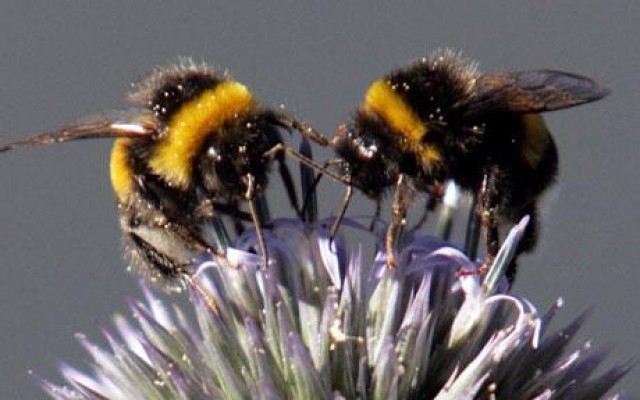When people look at a bee, there is a good chance that they will claim that humans have nothing in common with the makeup of bees. Until recently that might have held up scientifically, but now a new study has discovered that bees and humans both have what is referred to as novelty-seeking. It seems that trait is related back to the same genes.
Novelty seeking is simply a personality trait that has to do with exploration, impulsivity, extravagance, and disorderliness. Most humans possess this trait at a certain level. Those who like to go mountain climbing and jump out of airplanes obviously have more than other types of people. Bees have their own type of “explorers.” We refer to this type of a bee as a scout.
The scout is the bee that goes off without being instructed to do so and finds food for the hive. Gene Robinson, an entomologist and geneticist at the University of Illinois, and a graduate student Zhengzheng Liang conducted a study to find the comparison of this trait in bees with that of humans.
The study focused on a hive that was placed in an outdoor enclosure with mesh walls. Liang placed “a jar with a yellow flower pattern and faint scent” in the enclosure for the bees to eat. To identify the scouts, Liang then placed one alternative jar somewhere in the enclosure for three-consecutive days. Scouts were identified as those who visited at least two other jars. Those bees were dotted with ink.
Afterwards the scouts were captured and had their brains removed. Liang measured the difference of brain activity between scouts and non-scouts. She discovered that 16% of the bees’ 7500 genes were different between the two groups. Several of the genes discovered to have differences were those also associated with novelty-seeking in humans and other vertebrates including the “receptors for the neurotransmitters dopamine and glutamate.”
Liang then proceeded to feed sugar water laced with glutamate to non-scouts. This activated those genes, and the bees were then more likely to fly off towards jars that were moved in the enclosure. She also gave a glutamate inhibitor to scouts to prevent the effect. She did the same thing with dopamine and came to the same results.
Robinson said that the common ancestor of bees and humans could have been a flatworm, but does not expect that a scout existed at that time. He said, “Our results raise the interesting possibility that there’s a genetic toolkit for this kind of behavior.”




